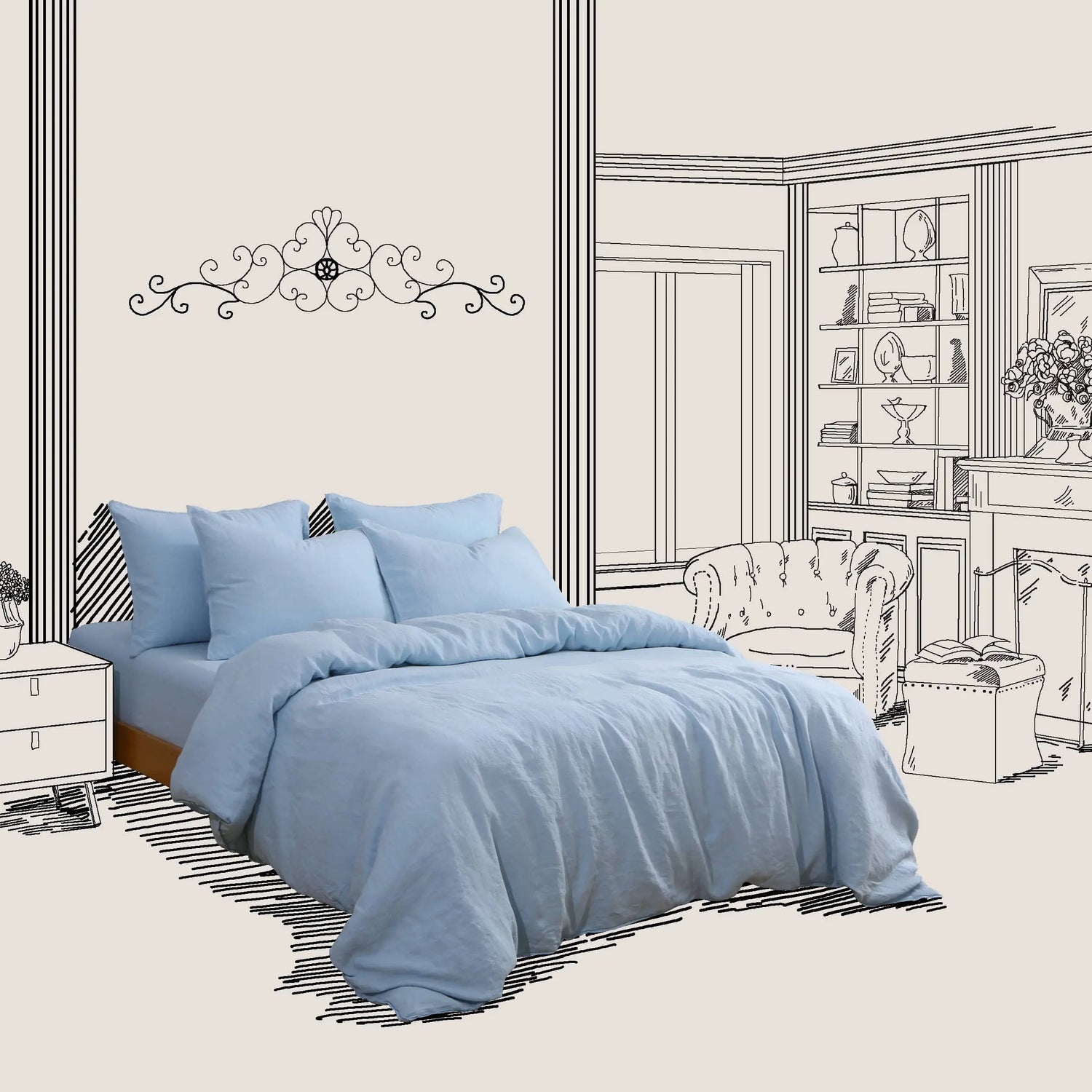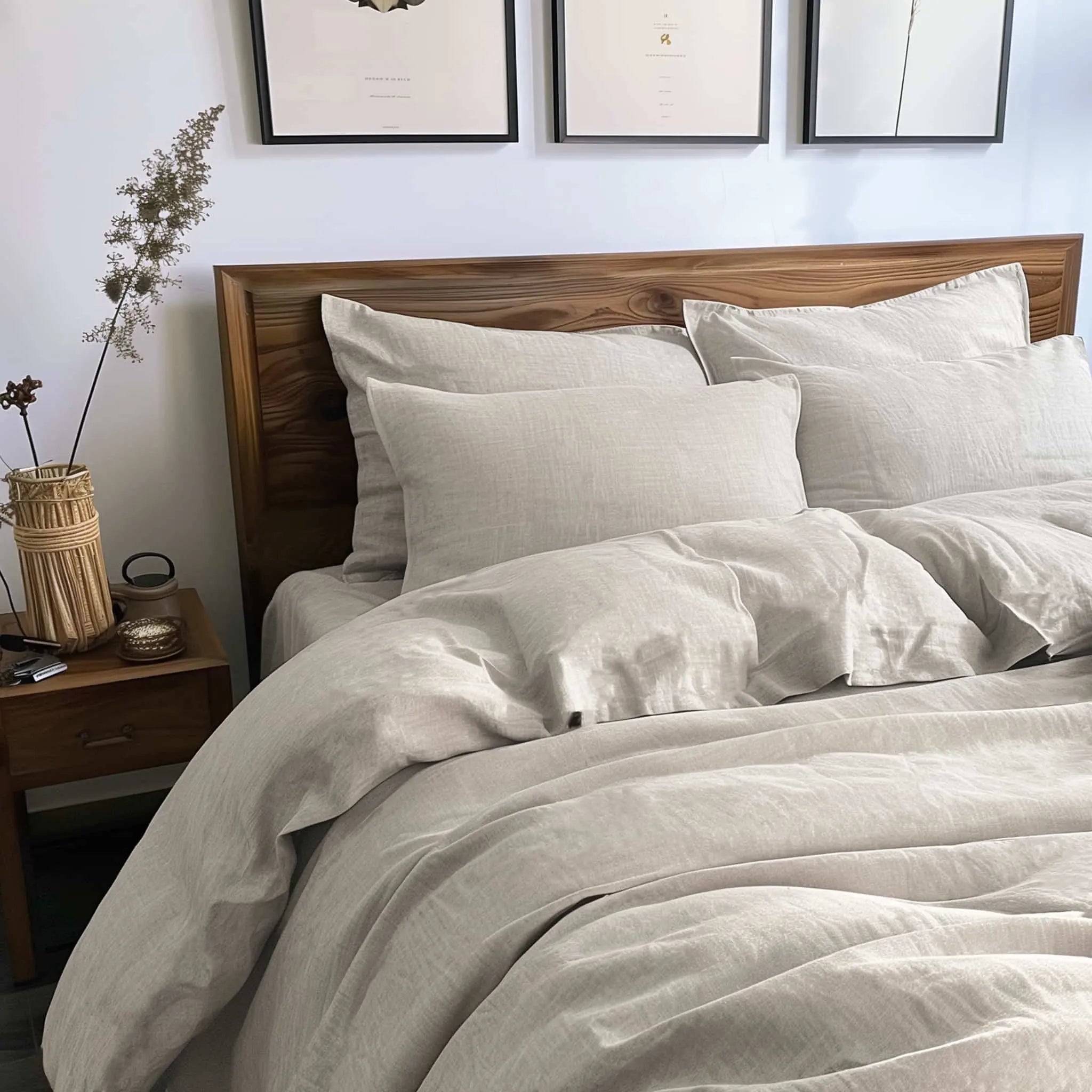I love linen and I want to share my passion with you. Do you know where linen comes from and how it is made? Do you want to learn more about its history, culture, benefits and uses?
Linen is one of the oldest and most valuable natural plant fibers used for textile by human beings. It has a long history and culture that can be traced back to ancient Egypt, where it was called “Woven Moonlight” for its simple and pure color and lustrous texture. Linen fiber has excellent properties of moisture absorption, breathability, antibacterial, antistatic, etc. It is widely used in clothing, home textiles, medicine and other fields.
In this post, I will share with you some of the knowledge and stories I learned about linen from a fascinating exhibition called “Woven Moonlight” that was held in Shanghai by a fabric manufacturer named Jisi Fang. The exhibition showcased the history, culture, growth environment, spinning process, weaving process, variety comparison and fabric forms of linen. It also displayed some new fashion designs and some precious linen antiques made of linen.
I also want to introduce you to a website that sells high-quality linen products, such as bedding, dining, and pet products. It is called Linen Times, and it is an independent online store that specializes in linen.
Linen Times is a brand that I created to advocate natural, simple and elegant lifestyle. I use 100% pure linen fabrics, which are sourced from France, Belgium and other countries with rich linen resources. I adopt traditional and advanced techniques, such as water washing, stone washing, dyeing, printing, etc., to create various styles and colors of linen products. I also pay attention to the details and quality of each product, ensuring that they are comfortable, durable and eco-friendly.
Here are some of the highlights of the exhibition and the website that I want to share with you:
- Linen is a crop that grows best in the temperate and humid climate of the northern hemisphere, between 45 and 65 degrees latitude. Normandy, France, is considered the golden area of linen cultivation, because of its ideal natural conditions, such as rainfall, temperature, soil, etc. Linen is sown in April and harvested in August. To preserve the full length of the fiber, the linen is pulled up by the roots, rather than cut. Then it is spread out in the fields for 15 to 25 days to undergo retting, which is a process of separating the fiber from the woody core and the outer skin by the action of microorganisms and moisture. This gives linen its distinctive grayish color, which is also called “rain dew color”.
- Linen fiber is very strong and durable, and can be spun into fine and smooth yarns. Linen fabric is crisp and cool, and has a natural luster and texture. Linen fabric can be classified into different types according to the thickness and density of the yarn, such as plain, twill, satin, jacquard, etc.; according to the color of the fiber, such as natural, half-bleached, fully-bleached, etc.; according to the processing method, such as washed, brushed, printed, etc. Linen fabric has many advantages, such as moisture absorption, breathability, antibacterial, antistatic, UV protection, etc. But it also has some drawbacks, such as easy wrinkling, low abrasion resistance, low dirt resistance, etc. Linen fabric requires proper care, such as using neutral detergent, avoiding bleach, hot water, dry cleaning, direct sunlight, dryer, metal hangers, etc.; ironing with medium or low temperature, avoiding high temperature, steam, and spraying water on the fabric; folding neatly and storing in a dry place, avoiding plastic bags, etc. If you are looking for some high-quality plain linen fabrics, you can check out my plain linen collection at Linen Times, which offers a variety of colors and sizes to suit your needs.
- Linen has been used for various purposes throughout history, such as clothing, bedding, tablecloth, napkin, towel, curtain, sail, rope, net, canvas, paper, etc. Linen was also a symbol of wealth and status in some cultures, such as ancient Egypt, where linen was used for mummification and religious rituals; and France, where linen was used for royal and aristocratic garments and furnishings. Linen is also used for artistic and creative purposes, such as oil painting, embroidery, lace, etc. Linen has a unique charm and beauty that can be appreciated by different generations and cultures.
- Linen Times offers a wide range of linen products, such as bedding, dining, and pet products. My bedding collection includes linen duvet covers, linen sheets, linen pillowcases and linen bedspreads, which are made of 100% European linen fibers, which have durable, sustainable, antibacterial, breathable and temperature-regulating features. My dining collection includes linen aprons, linen bread bags, linen tablecloths, linen placemats and linen napkins, which are made of natural European linen, which have a warm and cozy feel. My pet collection includes linen pet beds, which are made of high-quality European linen, which have antibacterial and odor-resistant functions. All my products are soft, breathable, durable and eco-friendly. I also have a blog section, where I share tips, stories, and information about linen and its benefits. If you want to see more of my products and services, you can visit my homepage and explore my collections.
I hope you enjoyed this post and learned something new about linen. If you did, please share it with your friends and family who might also be interested in linen. And don’t forget to visit Linen Times and use the coupon code OFF10 to get a 10% discount on your first order. Thank you for reading and happy shopping!




Leave a comment
This site is protected by hCaptcha and the hCaptcha Privacy Policy and Terms of Service apply.